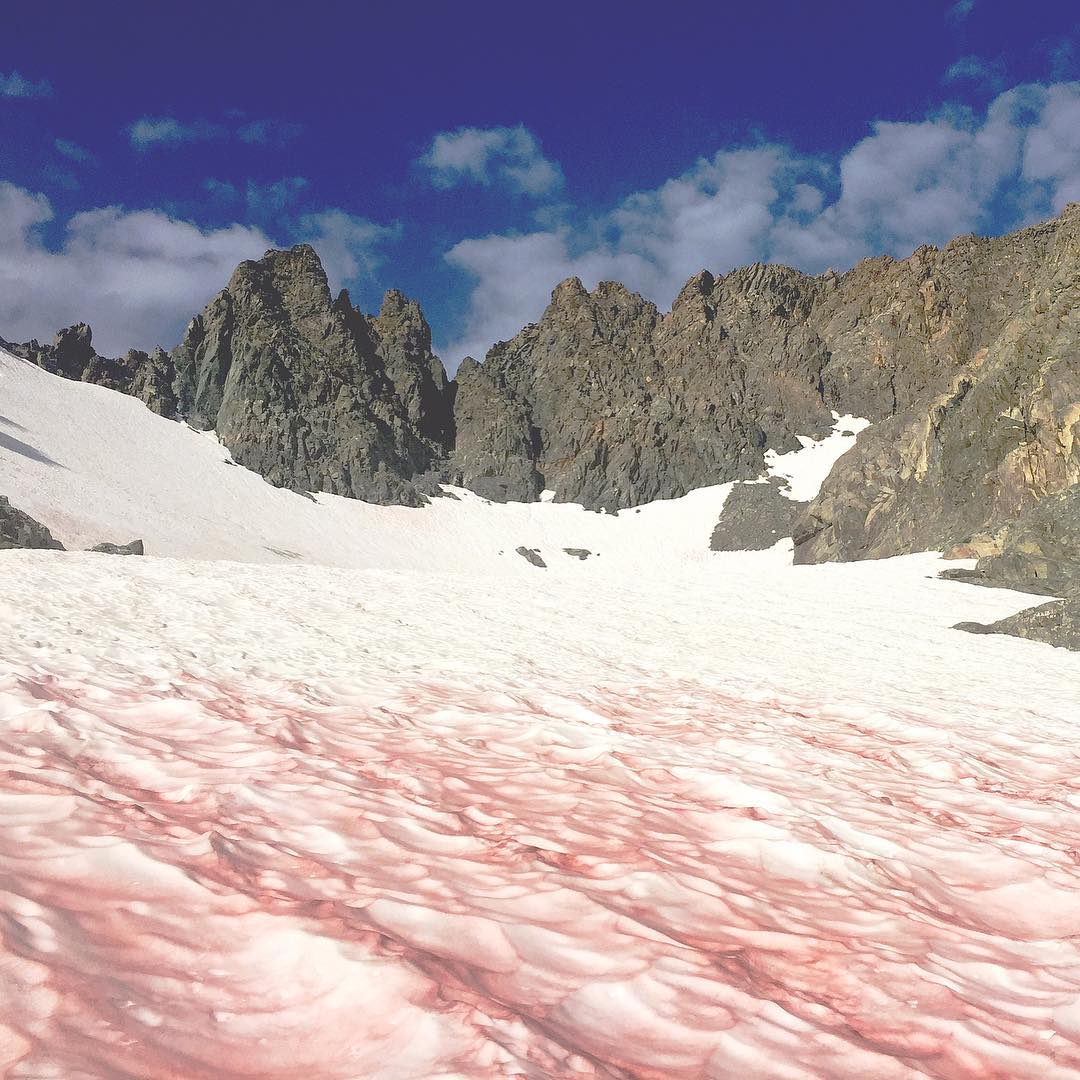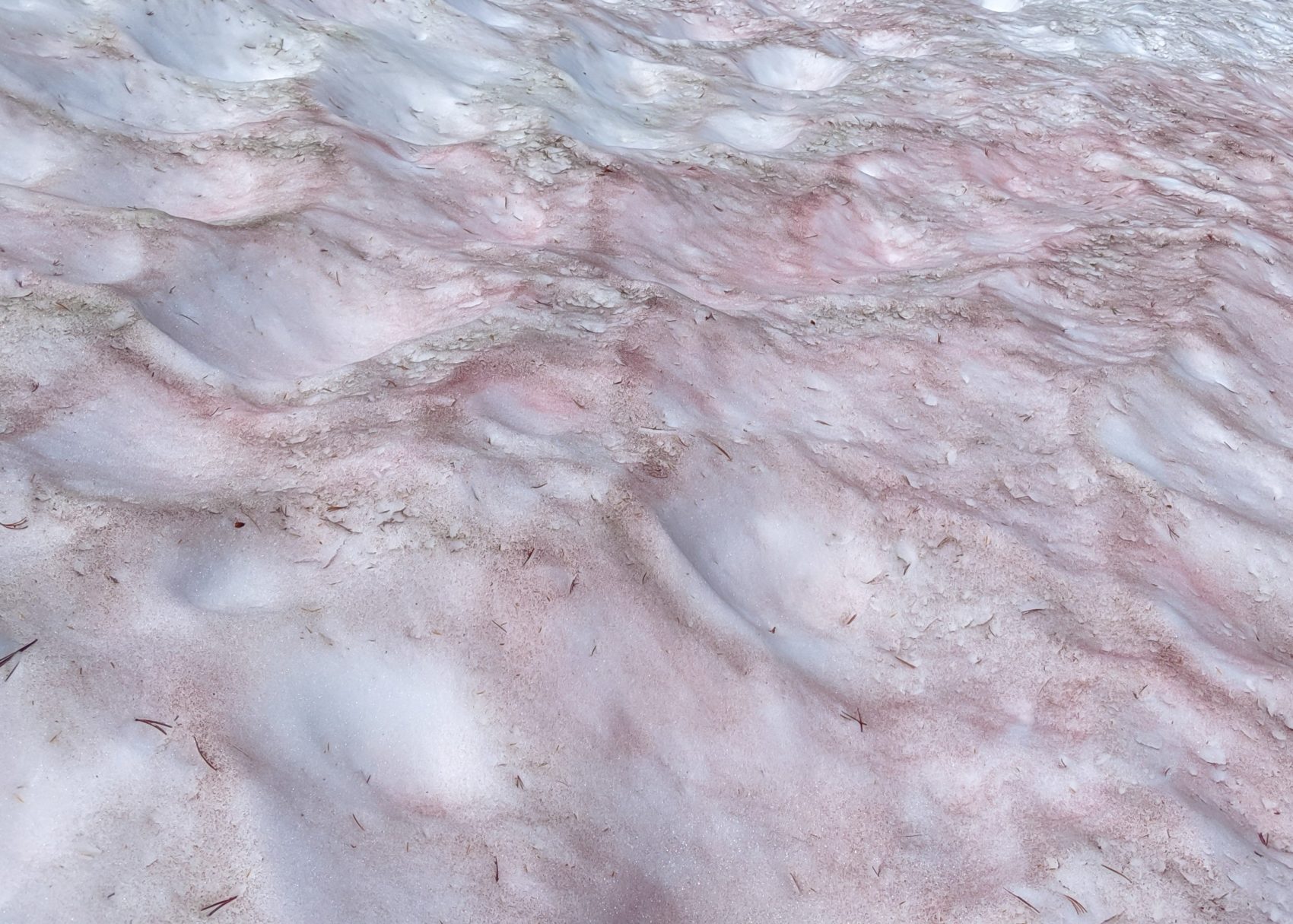
After a big snow year, snow still remains at higher elevations. And it’s turning red! This reddish-colored snow is called watermelon snow, but can also be referred to as blood snow or red snow.
It may be August, but there is still plenty of snow and ice above 9,500 feet! This reddish colored snow is often called watermelon snow. The red or pink color is the usually green algae’s natural sunscreen, protecting itself from too much heat and damaging UV radiation. pic.twitter.com/bfOSIadT4l
— Yosemite National Park (@YosemiteNPS) August 5, 2019
“Midsummer is the best time of the year to see it if you live in a high-altitude or Arctic clime with snowbanks that stubbornly refuse to yield to the sun,” is how Scientific American referred to the odd-colored snow in 2013.

The red or pink color is the usually green algae’s natural sunscreen, protecting itself from too much heat and damaging UV radiation. The colorful snow is made up of communities of algae that thrive in freezing temperatures and liquid water, resulting in algal blooms. When these typically green organisms get a lot of sun, they produce a natural type of sunscreen that paints the slopes pink and red. The addition of color to the surface darkens the snow, allowing it to heat up faster, and melt more quickly.
Watermelon snow, also called snow algae, pink snow, red snow, or blood snow, is a phenomenon caused by Chlamydomonas nivalis, a species of green algae containing a secondary red carotenoid pigment (astaxanthin) in addition to chlorophyll. Unlike most species of fresh-water algae, it is cryophilic (cold-loving) and thrives in freezing water.[1]
This type of snow is common during the summer in alpine and coastal polar regions worldwide, such as the Sierra Nevada of California. Here, at altitudes of 10,000 to 12,000 feet (3,000–3,600 m), the temperature is cold throughout the year, and so the snow has lingered from winter storms. Compressing the snow by stepping on it or making snowballs leaves it looking red. Walking on watermelon snow often results in getting bright red soles and pinkish trouser cuffs – Wikipedia
And although it sounds delicious, we wouldn’t recommend eating watermelon snow.